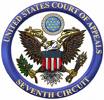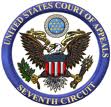Seventh Circuit Criminal Case of the Week: Halfway Houses Back on the Menu
 If Congress makes an obvious error in drafting a statute, can a court correct that error by effectively adding something to the statute that is not there? Such was the interesting jurisprudential question the Seventh Circuit confronted last January in United States v. Head, 552 F.3d 640 (2009). Because of a mix-up with statutory cross-references, the statute that lists permissible conditions of supervised release in the federal system does not include assignment to a halfway house. However, the first seven circuits to consider the question held that sentencing judges could indeed order placement in a halfway house, reasoning that a literal interpretation of the statute would produce an absurdity. In Head, the Seventh Circuit bucked the trend and rejected the government’s absurdity argument. (My post on Head is here.) Although Congress corrected its drafting error with a 2008 amendment, Head held that the amendment could not be applied retroactively, meaning that assignment to a halfway house seemed to be off the table as a sentencing option for a large group of defendants still moving through the court system in this region.
If Congress makes an obvious error in drafting a statute, can a court correct that error by effectively adding something to the statute that is not there? Such was the interesting jurisprudential question the Seventh Circuit confronted last January in United States v. Head, 552 F.3d 640 (2009). Because of a mix-up with statutory cross-references, the statute that lists permissible conditions of supervised release in the federal system does not include assignment to a halfway house. However, the first seven circuits to consider the question held that sentencing judges could indeed order placement in a halfway house, reasoning that a literal interpretation of the statute would produce an absurdity. In Head, the Seventh Circuit bucked the trend and rejected the government’s absurdity argument. (My post on Head is here.) Although Congress corrected its drafting error with a 2008 amendment, Head held that the amendment could not be applied retroactively, meaning that assignment to a halfway house seemed to be off the table as a sentencing option for a large group of defendants still moving through the court system in this region.
But now the court has significantly limited the significance of Head in United States v. Anderson (No. 09-1958).


 The Seventh Circuit continues to struggle with the question of what it means for the federal sentencing guidelines to be “advisory.” In United States v. Booker, 543 U.S. 220 (2005), the Supreme Court held that the then-mandatory guidelines system violated the Sixth Amendment. The Court corrected the constitutional problem by converting the guidelines from mandatory to advisory. Then, in Kimbrough v. United States, 128 S. Ct. 558 (2007), the Court confirmed what even the government had recognized and conceded: “advisory” means that a district court judge may impose a sentence outside the recommended guidelines range on the basis of a policy disagreement with the guidelines.
The Seventh Circuit continues to struggle with the question of what it means for the federal sentencing guidelines to be “advisory.” In United States v. Booker, 543 U.S. 220 (2005), the Supreme Court held that the then-mandatory guidelines system violated the Sixth Amendment. The Court corrected the constitutional problem by converting the guidelines from mandatory to advisory. Then, in Kimbrough v. United States, 128 S. Ct. 558 (2007), the Court confirmed what even the government had recognized and conceded: “advisory” means that a district court judge may impose a sentence outside the recommended guidelines range on the basis of a policy disagreement with the guidelines.